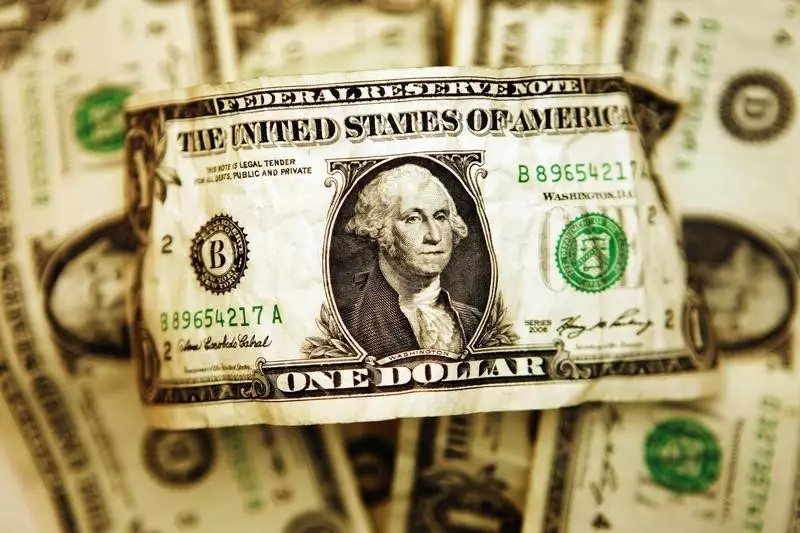The U.S. dollar’s recent movements reflect a complex interplay of economic indicators and geopolitical developments. On a Friday marked by anticipation for crucial labor market data, the dollar edged down slightly after reaching a six-week peak. As we dissect the factors influencing this currency’s behavior, it becomes evident that both macroeconomic trends and market sentiment play pivotal roles in determining the dollar’s trajectory.
At the start of trading, the Dollar Index, which measures the greenback against a spectrum of six major currencies, recorded a minor decline of 0.1%, settling at approximately 101.667. Despite this slight dip, the index maintained a remarkable weekly gain of about 1.5%, which marks its strongest weekly performance since April. This upward momentum can be attributed to a series of relatively positive labor market indicators, including job openings, ADP private payroll statistics, and weekly unemployment claims. These data points have not only bolstered the dollar but have also heightened safe-haven demand due to escalating tensions in the Middle East, which raise pertinent questions about their potential impact on the global economy.
As we await the September nonfarm payrolls report, investors are keenly aware that this release could significantly shape market sentiment regarding future interest rate adjustments by the Federal Reserve. Most analysts predict a moderate increase in job creation, estimating an addition of 147,000 payrolls, with the unemployment rate steady at 4.2%. However, firms like ING voice a more cautious outlook, anticipating a lower payroll figure of 115,000 and a slight uptick in unemployment to 4.3%. This divergence in expectations underscores the uncertain economic landscape and suggests that the Federal Reserve may still consider a rate cut, maintaining a delicate balance between growth and inflation control.
In contrast to the dollar’s mixed signals, the euro continues to show signs of weakness against the dollar, with the EUR/USD pair drifting to 1.1027. This decline reflects recent reports of decreasing inflation rates in the eurozone, coupled with strengthening industrial production metrics in France. Nevertheless, these positive growth indicators have been overshadowed by the European Central Bank’s (ECB) ongoing monetary easing efforts, leading to heightened expectations of another interest rate cut in the near future.
ING further speculates on the euro’s potential trajectory, predicting continued bearish sentiment against the dollar. The bank emphasizes the importance of the 1.1000 support level; a fall below this threshold could catalyze a more extended decline toward the 1.09 mark. This caution reflects the intricate balance between rate differentials, overall risk sentiment, and broader economic conditions in the European Union, which are further complicated by the turbulent nature of budgetary negotiations.
The British pound has seen a modest rebound, with GBP/USD rising by 0.2% to 1.3154 after a significant drop stemming from comments made by Bank of England Governor Andrew Bailey. His remarks regarding aggressive potential interest rate cuts if inflation pressures persist underscore a changing stance in monetary policy, a stark contrast to expectations earlier this year when the pound appeared to be on an upward trajectory. The pound, benefiting from a favorable annual performance, is still caught in a complex dance with UK inflation dynamics and global market perceptions.
Additionally, the USD/JPY pair saw fluctuations in response to uncertainties surrounding the Bank of Japan’s monetary policy. After peaking at a six-week high of 147.25, the dollar fell 0.4% to 146.28, emphasizing the often volatile intersection of currency values and central bank strategies. Concurrently, the USD/CNY remained stable at 7.0185, as Chinese markets observed a holiday break for Golden Week celebrations.
As the currency markets continue to react to intricate global economic signals and regional developments, traders and policymakers alike must remain vigilant. The interplay between stable job growth, shifting interest rate expectations, and geopolitical tensions will undoubtedly shape future movements of the U.S. dollar and its counterparts. Understanding these dynamics is crucial for making informed investment decisions in an increasingly unpredictable market environment.

